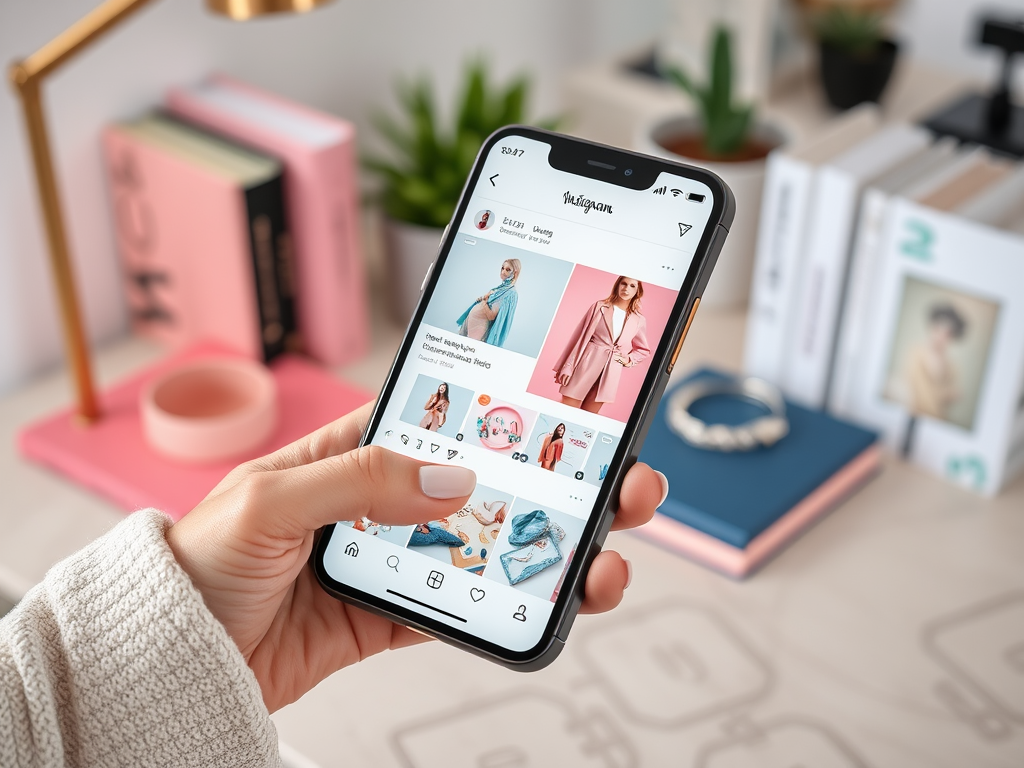
In an age where social media not only influences our lives but also shapes consumer behavior, Instagram stands out as a significant platform for connecting brands with their audiences. The rise of e-commerce has integrated deeper into social media, transforming the way brands showcase their products. With Instagram Shopping, brands have the opportunity to turn casual browsing into seamless shopping experiences. This feature allows businesses to create an enchanting storefront directly within the app, making it easier for users to discover and purchase products through visually striking content. As Instagram continues to evolve, understanding how to leverage Instagram Shopping effectively can give brands a competitive edge. Whether a small startup or an established enterprise, mastering this feature can lead to increased sales and brand loyalty.
Setting Up Instagram Shopping

When it comes to leveraging Instagram Shopping, the first step is ensuring you have the right setup in place. This process involves several important steps that can appear daunting if you’re unfamiliar with the platform. However, once you understand the necessary steps, setting up Instagram Shopping can be straightforward and rewarding. Brands must start by converting their Instagram account to a business account, which unlocks the shopping features. Following this, it’s essential to link a product catalog to your account for a cohesive shopping experience. Without these critical preliminary steps, your efforts to create an engaging shopping platform will fall flat.
Creating a Business Account
To fully utilize Instagram Shopping, having a business account is non-negotiable. Converting your personal account is simple: just navigate to the settings and select the option to switch to a business account. Once you’ve done this, you’ll gain access to numerous analytics tools and advertising options designed for businesses. These features allow for more sophisticated engagement with your audience. With this new account, you can not only sell products but also build deeper relationships with your customers. Understanding your audience through engagement metrics becomes key to refining your marketing strategies.
Linking Your Product Catalog
The next step involves linking your product catalog. This is essentially the backbone of your Instagram Shopping experience. To begin, you’ll need to set up a product catalog in Facebook’s Commerce Manager. Brands can upload their products, including descriptions, prices, and images, ensuring that all information is synced correctly. Once the catalog is set up, you’ll link it to your Instagram account, allowing users to view and purchase directly from your posts and Stories. This streamlined process not only enhances user experience but significantly improves your conversion potential.
Best Practices for Using Instagram Shopping

To maximize the effectiveness of Instagram Shopping, brands should implement certain best practices. Engaging with your audience through captivating content is key. Research has shown that high-quality visuals drive higher engagement rates, which can lead to increased sales. It’s not sufficient to simply list out products; creating a narrative around them can create a stronger connection. Equally important is the use of Instagram Stories, which can be a dynamic way to engage users. By incorporating product tags and calls to action within your Stories, brands can inspire immediate purchases while keeping their audience intrigued.
| Best Practice | Description |
|---|---|
| Engaging Visual Content | Use high-quality images and videos that showcase products in real-life scenarios. |
| Interactive Stories | Incorporate polls, questions, and tags to encourage user interaction. |
| Influencer Collaborations | Partner with influencers to reach a wider audience and enhance brand credibility. |
By focusing on these areas, brands not only improve their visibility but also create a more engaging shopping experience. A holistic approach plays a pivotal role in crafting a successful Instagram Shopping strategy. Brands are encouraged to experiment with different types of content to see what resonates best with their audience.
Analyzing Performance on Instagram Shopping
After implementing your Instagram Shopping strategy, analyzing performance is crucial for sustained success. Understanding metrics allows brands to assess what’s working and what’s not. Key performance indicators (KPIs) such as conversion rates and click-through rates are vital for gauging effectiveness. Implementing tracking tools can provide insights into user behavior, enabling brands to refine their strategies over time. In addition to Instagram’s native analytics, you can utilize third-party tools for deeper analysis. These insights help brands adapt to changing consumer preferences and trends, ensuring they remain competitive in a fast-paced market.
- Conversion Rate: The percentage of users who make a purchase after clicking through from a shoppable post.
- Engagement Rate: Measured by likes, comments, and shares, indicating how well your content resonates with your audience.
- Click-Through Rate: The number of clicks on product tags relative to the number of impressions.
Conclusion
In conclusion, Instagram Shopping is a powerful tool that can significantly enhance a brand’s sales potential. By understanding the setup process, adopting best practices, and continuously analyzing performance, brands can create a dynamic and effective shopping experience on this popular platform. The potential for growth through Instagram Shopping is massive, driven by compelling visual content and strategic engagement. As the platform evolves, brands that adapt their strategies to harness the full potential of Instagram Shopping will have a distinct advantage in reaching and converting their audience.
Frequently Asked Questions
- What is Instagram Shopping?
Instagram Shopping allows brands to create a personalized storefront and enable direct shopping through their posts and Stories. - Do I need a business account for Instagram Shopping?
Yes, a business account is necessary to set up Instagram Shopping features. - Can I sell any product on Instagram?
Instagram has specific policies that outline what can be sold on the platform. Generally, physical products are permitted, but some categories may require additional approvals. - How do I set up product tags in my posts?
You need to connect your product catalog and ensure your account has access to the shopping features before you can tag products in your posts. - What metrics should I focus on for Instagram Shopping?
Key metrics include conversion rates, engagement rates, reach, and click-through rates on your shoppable posts.




